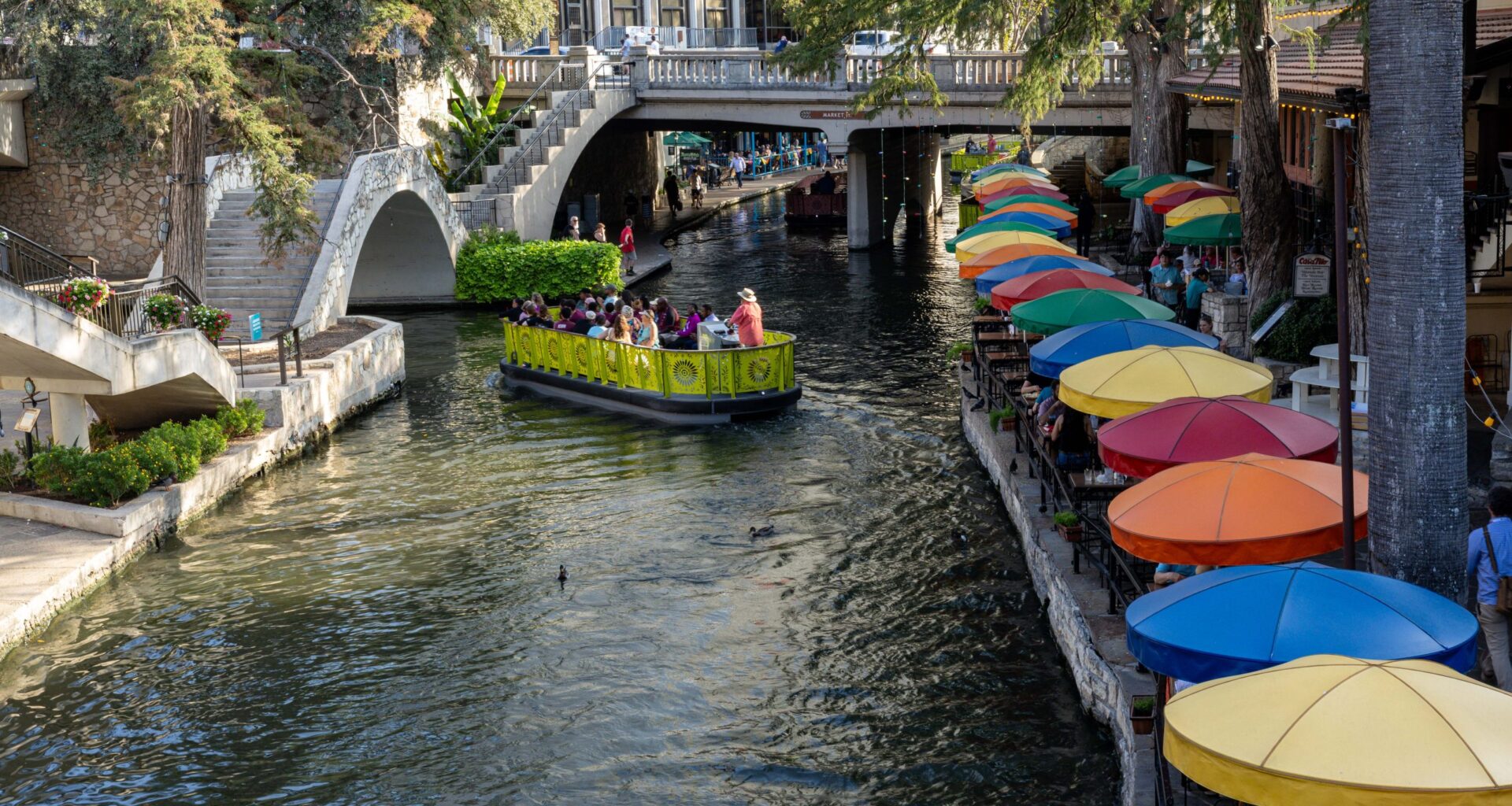Business is booming at commercial and retail hubs across San Antonio. The Rim, Alamo Ranch, Brooks and Pearl are bustling with customers.
More investment downtown and on the East Side could be on the way, but business owners at one of the city’s oldest attractions say that they are suffering.
River Walk business owners are concerned about declining foot traffic and falling sales. They want to bring back more local customers. They want to keep up.
“I’ve been here for 15 years. It’s never been worse,” said David Strainge, a managing partner for Casa Catrina, a Mexican restaurant in La Villita. “Virtually nothing has been done to improve it, enhance it.”
At a City Council meeting Oct. 1, community members raised some of those concerns.
“We have had trends the past three years where sales for the summer go down,” Marco Barros, a trustee with the River Walk Business Group, told he council. “This summer, we have had a drop in sales of 11 to 12% [compared to last year].”
The City of San Antonio is working on a new strategic plan for the River Walk to guide any changes or investments — it could use the River Walk Capital Improvements Fund. The fund collects about $500,000 a year from River Walk business owners.
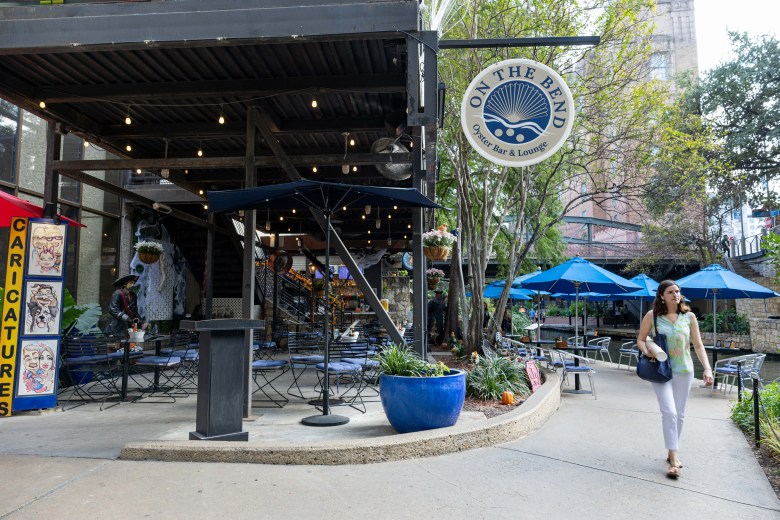 Businesses along the San Antonio River Walk say that customer traffic has shrunk considerably over the last few years. Credit: Amber Esparza / San Antonio Report
Businesses along the San Antonio River Walk say that customer traffic has shrunk considerably over the last few years. Credit: Amber Esparza / San Antonio Report
River Walk business owners are taking a broad approach to change, advocating for everything from keeping the walkway cleaner to multi-million dollar investments. Key issues include changing local ordinances to allow digital signage, adding shade and cooling and making parking more accessible.
There is broad agreement between businesses and officials that local residents should be a bigger part of the River Walk’s target audience.
“Yes, it no doubt needs some TLC, but those folks and those business owners need to step up,” said Trish Deberry, president and CEO of Centro, the downtown nonprofit that works to maintain the area. “It’s not nearly, from the locals perspective, the first place they’re going to go.”
She noted the culinary competition from places like the Pearl and Southtown. San Antonio is renowned for its local restaurant scene — UNESCO noted the city for its gastronomy in 2017. And on Tuesday, San Antonio expanded its rising culinary profile with Michelin one-star awards for Mixtli, Isidore and Nicosi.
Why aren’t there more local restaurants and foods on the River Walk, she asked.
Why are things bad on the River Walk?
River Walk business owners have seen a drop in leisure and tourism travel since the end of the COVID-19 pandemic.
“This summer was very disappointing,” said Garvin Oneil. “We’ve been tracking down in our leisure, transient and tourist business for the last two years.”
Oneil is the manager at the Menger and the Crockett hotels, located near the Alamo and a block away from the River Walk. Oneil said there was a bump in tourism after federal stimulus checks hit bank accounts in 2022, but those hotels saw year over year declines in business between June and September.
Bill Lyons, owner of Casa Rio, said sales are down compared to pre-pandemic levels. The historic Tex-Mex restaurant has operated on the River Walk since 1946.
“My sales have deteriorated routinely every year as we become an old product,” said Terry Corless, owner of several businesses in the area, including Mad Dogs British Pub and restaurant On the Bend. “The River Walk isn’t dead. The River Walk business and traffic has shrunk considerably.”
Those longtime business owners say construction at the Alamo has affected foot traffic and prevents convention attendees from easily reaching their businesses.
“All the construction that’s going on definitely, definitely affects the businesses,” said Lyons. There are workers in hard hats just 300 feet away from Casa Rio’s doors.
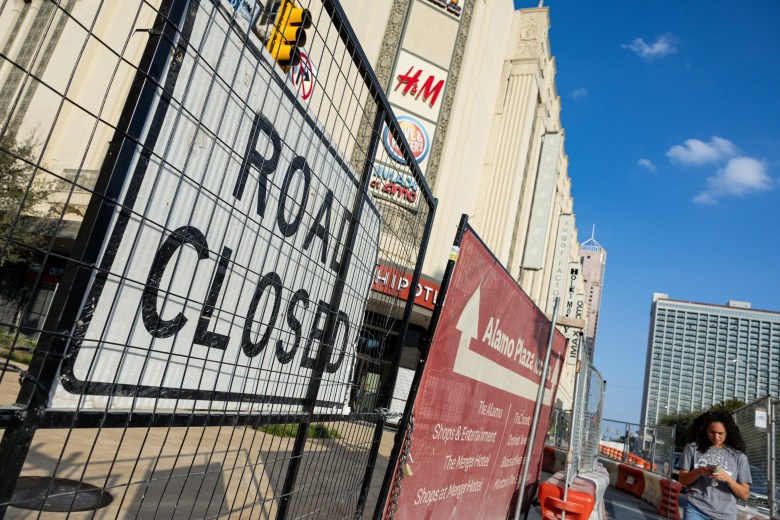 Main entrances and walkways to the Shops at Rivercenter remain closed along East Commerce Street. Credit: Amber Esparza / San Antonio Report
Main entrances and walkways to the Shops at Rivercenter remain closed along East Commerce Street. Credit: Amber Esparza / San Antonio Report
There’s also more competition.
“Twenty years ago, there wasn’t much in San Antonio, so locals did come to the River Walk [more often]. Now, they come once a year,” Strainge said. “You always have to improve, to innovate, to invest.”
Events at Pearl or in Southtown draw residents away, Corless added.
“If you go to the Pearl, there’s always a farmer’s market or a fair,” he said. “Why aren’t we activating?”
Some business owners are finding more success. John Vale opened a new location of the Alamo Biscuit Company in the Shops at Rivercenter in April. He’s closer to the convention center and his business is open 24 hours.
Vale said he’s planning to add a patio bar and redo the building’s facade to bring in even more customers.
“Business has been great, but keep in mind, I’ve only been there six months,” he said. “I’ve got 4,000 hotel rooms around me. I’m in a prime area … other businesses aren’t fortunate to be in the prime area.”
While business is going well, Vale agrees with others that parking is a major issue. It’s a complaint Vale, Strainge and Corless all hear about — that paying for parking discourages San Antonio residents from stopping by.
“The only way locals are going to come downtown is if we alleviate parking costs,” Vale said.
Business owners want more flexibility on parking. That could require working with private parking lot owners. Currently, the City of San Antonio operates 6,600 off-street parking spots, roughly 17% of the 39,000 total in the downtown area, as well as parking meters.
Off-street parking is between $2 and $4 an hour, or $5 to $15 per day, depending on local events, said Kelly Saunders, a city public relations manager.
“Revenue generated from City-owned parking facilities is reinvested directly into the parking system to cover operating and maintenance costs. These facilities are not intended to generate profit,” Saunders said.
Parking is free Tuesday after 5 p.m. and on Sundays at the City Tower garage.
“Why can’t we do downtown Thursday (for free parking)?” asked Deberry. “To me, that would be a very easy way to get people downtown and help downtown business owners.”
Possible solutions
There are as many solutions for the River Walk’s ailments as there are people offering them. Part of the city’s new strategic planning process will be evaluating those solutions and figuring out what’s most effective and what will bring residents back.
Vale said customers at his River Walk location are roughly 80% tourists. Getting consistent local patronage is important, and several city officials agreed when they discussed a new strategic plan in August.
The City of San Antonio has specific rules for certain things along the River Walk, like prohibiting digital signage or regulating speakers and noise levels.
City officials and business owners say those ordinances can be loosened and modernized to allow for more freedom and flexibility to try new things.
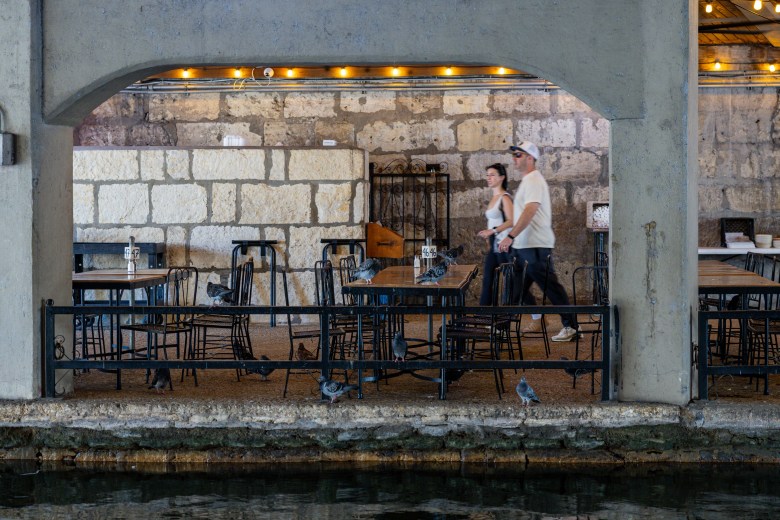 Businesses along the San Antonio River Walk have been seeing a steady decline in patronage over the past few years. Credit: Amber Esparza / San Antonio Report
Businesses along the San Antonio River Walk have been seeing a steady decline in patronage over the past few years. Credit: Amber Esparza / San Antonio Report
Increasing accessibility has also been popular, both through increasing access for community members with disabilities and through wayfinding improvements.
“It’s very easy to get lost down there,” Deberry said.
Strainge called for lighting the River Walk all year, rather than just during the holiday season. Corless suggested building water features and adding green space and plants.
Both suggested using the Arneson River Theatre at La Villita for more events and adding activations in the area.
Does investment need to go both ways?
While River Walk business owners have looked around at other mega projects in downtown — $550 million for the Alamo Plan, a $750 million proposal for the Henry B. Gonzalez Convention Center and what could be a $1.3 billion arena for the Spurs — and asked where that type of investment is for them. Some officials are not sold.
“I’m not saying we shouldn’t invest here, but I do want to discuss it as a component of the larger downtown investment we’re making,” said Jalen McKee-Rodriguez, who represents the East Side’s District 2, at the Oct. 1 meeting.
“$18.7 million have already been spent on River Walk capital projects while many neighborhoods lack basic infrastructure,” he said. “We’re already planning to focus more bond dollars downtown as part of our efforts to realize Project Marvel.”
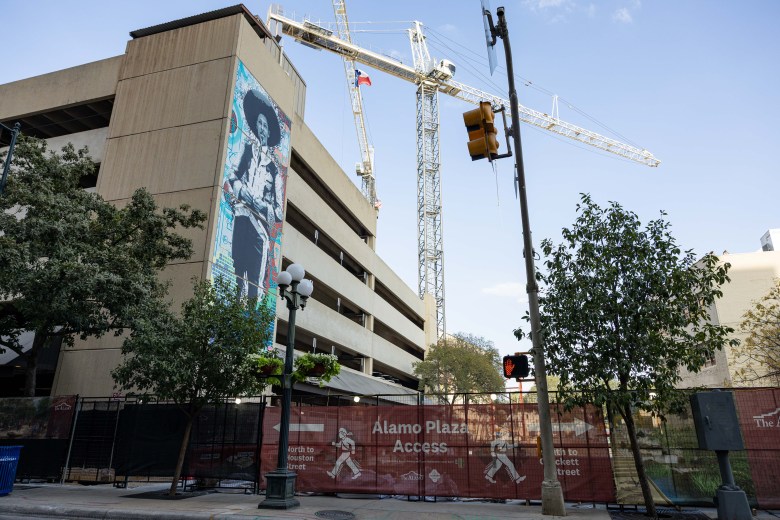 Street entrances and roadways to the Alamo, the Shops at Rivercenter, hotels and other attraction in the area remain closed off due to construction along Losoya Street and Alamo Plaza. Credit: Amber Esparza / San Antonio Report
Street entrances and roadways to the Alamo, the Shops at Rivercenter, hotels and other attraction in the area remain closed off due to construction along Losoya Street and Alamo Plaza. Credit: Amber Esparza / San Antonio Report
An $18.7 million update to the River Walk was completed in 2022 using the River Walk Capital Improvement Fund.
When discussing the River Walk improvements, several other council members asked what businesses people wanted to see in the area and emphasized the need for family-friendly establishments.
“Some places don’t belong there,” said Councilman Edward Mungia (D4), referring specifically to the chain restaurant Hooters.
Lyons said River Walk business owners have prioritized safety and a family-friendly environment, but the question of which businesses are going to attract locals could be a part of the strategic planning process.
“There’s no bad guys, we have to remember the River Walk is critical to tourism,” Oneil said, emphasizing the need for collaboration.

